Sicilian food is the original fusion cuisine, a unique mix of all of its diverse cultural heritages. The island has been at the heart of thirteen different empires over the last three millennia, and each one of them has left its mark on the Sicilian housewife’s kitchen cupboard.
The Phoenicians
The Phoenicians were traders and pioneering seafarers, originally from Lebanon. They established colonies throughout the Mediterranean, and eventually transferred the centre of their empire to Carthage, now known as Tunis, the capital of Tunisia.
Grains and pulses
They brought a great many cereals to Sicily, including durum wheat, which makes the best pasta. They also brought lentils, amongst other pulses. In those days pasta was made at home, fresh, each time it was needed, and it was popular throughout the countries encircling the Mediterranean. Dried, ready-to-eat pasta was invented many centuries later. Cous cous, which is simply wheat flour paste pressed through a coarse sieve, is thought to have been one of the most popular types at that time.

Salt
The Phoenicians established a sea salt industry in Trapania and Marsalsa, in western Sicily. You need relentless sunshine and steady winds to make the sea evaporate and leave salt crystals on the ground. Their salt farms were on the mainland, opposite the vast city and shipyard they founded on the island of Mozia, just off the coast by Marsala.
Marsala wine
They also established vinyards full of grape species they imported from the Middle East on the island of Mozia, which made exquisite wine. Before that, Mediterranean people were drinking Greek stuff like retsina – so, pretty gross really. The Phoenicians had a new way of corking the bottles and their wine was an entirely superior drink. Try a slosh of Marsala; it’s ambrosial! The Sicilians drink it as a sweet desert wine and also use it in various recipes, especially with red meat.
Marsala wine was made famous many centuries later by a family of British aristocrats, who realised its high alcohol content and wax-sealed cork stoppers made it ideal for long transportation by ship up to Britain, without turning to vineagar on the way.

Figs
Fresh figs, which flourish throughout Sicily, were a Lebanese crop which the Phoenicians brought over to Sicily and spread throughout their Mediterranean colonies. They knew how to dry them in the sun which could make them last all year round, and they provided a high-calorie and vitamin-filled snack which was ideal travelling food.
The Phoenicians were masters in water drainage, and built the first large cities in Sicily, with rainwater channels to gather water for drinking, and drainage channels to eliminate sewage from the city. With all those lentils and figs they were eating, I should jolly well think so too.
The Greeks
Spelt
These days, more and more baked goods in Italy are made from spelt (farro) which is the ancient species of wheat that the Greeks cultivated. These are enjoying a great revival as a health food in modern Sicily.
The Greeks loved beans and pulses like the Phoenicians, but typically ate them as a sturdy stew with spelt added. When they needed a premonition to help them foresee the future they would add grated cheese to the top of their bean and spelt stew, to give them trippy cheese dreams, which they interpreted with the help of specialist priests.
Try this yourself. It is highly entertaining, yet still legal. Last time I did it I spent the whole night engaged in intellectual conversation with Mr. Ed, the talking horse. If anyone can tell me what this means, please enlighten me in a comment below.
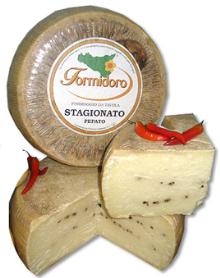
Cheese
The oldest type of Sicilian cheese, called Pecorino Siciliano, is made from sheep’s milk and was invented by the Ancient Greeks in Sicily about 500 B.C. It is not made anywhere in the world outside Sicily, and it is one of the world’s oldest types of cheese still made according to a strictly defined process to keep it consistent. It has a D.O.C. (di origine controllata) marking from the Italian government, which means it is illegal to make it anywhere but Sicily or with any deviation from the traditional method.
The Greeks were very fond of cheese and made many varieties back in the old country, including many using goats’ and sheep’s milk. Sicilians have other varieties of cheese which also date from this period.
Fish and seafood
Octopus and squid dishes in Sicily are also traditions originating with the Greek colonists. The Ancient Greeks loved these types of seafood and ate them as a dietary staple. You may notice Greek pots with pictures of squid, cuttlefish and octopi on them in museums throughout Sicily. The Sicilians still use the Greek method of fishing them, by dangling lanterns over the water; the octopi are drawn to them irresistibly like moths to a candle, and come blubbering up to the surface, where they are easily caught.

The Romans
Not all mouse brain sausages!
Schoolboys throughout Europe, including in Italy where they unwittingly still eat Roman recipes, are taught that Romans ate revolting food. School books would have us believe a typical Roman dinner consisted of mouse brain sausages, smothered in a disgusting sauce made from rotten fish. This idea originated from a poor translation of the main surviving Roman recipe book, combined with the judgement of a few boiled-cabbage eating English scholars who believed garlic was antisocial, and that any spice other than pepper was probably a foreign plot. Whilst it makes “doing the Romans” far more entertaining for primary school children, it is awfully misleading.
In reality, Roman food was fabulous, delicious and healthy too.
Oysters
The Romans ate far more fish than meat, and particularly liked prawns and shellfish. They even established oyster farms around Sicily. Seafood salad is one of the great Roman contributions to Sicilian cuisine.
Vegetables
The Romans also introduced a much wider variety of vegetables to Sicily, and ended the Phoenician and Greek obsession with pulses. Roman carrots came in various colours, most of them being purple; pretty much the only colour they did not have was orange. Garlic and onions were popular among the Romans to flavour their dishes, and they established different varieties in Sicily, along with leafy green vegetables and types of lettuce.
Wine
Like most ancient people, the Romans drank wine instead of water. They had not discovered – as the Chinese had – that germs could be eliminated from water by boiling it. So whilst the Chinese lived on tea, the Roman diluted their wine in the ratio of one part wine to three parts water, which is enough to kill most germs. They were able to hydrate themselves in this way without getting drunk. They thought the Celts, who drank wine neat and enjoyed drunken booze ups, were shockingly barbaric – indeed, the word “barbaric” derives from their name for this group of tribes and their habitual piss-ups.
Bread and pizza
Roman bread was sturdy and wholemeal stuff. The typical loaf was round, and made to break easily into eight triangular pieces. Romans were so obsessed with bread that poor people, who were hard up for food, would eat bread and nothing else. You won’t find Roman style bread in Sicily, because nowadays they are fixated upon very fine white flour, but do try all the types of bread in Sicily because the flour is the same, and their bread is probably the nicest in all Europe.
The Romans ate pizza too, topped with cheese and vegetables but, of course, without tomato. Roman pizza usually had a very hard base, which would snap almost like a biscuit, and they often just used the bread as a “plate” and picked the topping off it.
Sicilian pizzerias still offer a selection of classic tomato-free pizzas. They vary from region to region so you will have to ask for local advice from waiters! Another typical Sicilian type of “pizza” is called sfincione. It is a thick piece of bread with a small amount of tomato and sometimes cheese on top – it is more like garnished bread than a pizza and you usually buy it in the baker’s shop rather than a pizzeria or restaurant.

Sweet and sour
The Romans loved strong flavours and tangy, vineagary sauces. A lot of their food was preserved in vineagar, which was dramatically more acidic than modern picked foods (which you may notice are filled with other preservatives and sold in jars of vineagar diluted with water). When these pickled vegetables were added as ingredients, the whole dish would take on a tangy taste. The Sicilian tradition of agrodolce (sweet and sour) style cooking – which uses olive oil, vineagar and sugar – was the very quintessence of ancient Roman cuisine. One of the classic Sicilian agrodolce dishes is pumpkin, but other foods are also cooked with this mouthwatering sauce, including liver which is smothered in mouthwatering fried onion.
Fish sauce and anchovy paste
Also in common with South-East Asians, the Romans loved seasoning their food with fish sauce, which they called garum. They established Garum factories throughout their empire, and Sicilian and Spanish garum were considered the best. Garum was fermented, and was probably more like the fish sauce used in modern South-East Asian stir-fries, but anchovy paste is the closest you will get in modern Sicily.
Anything with anchovy paste on it harks back to the great Roman chefs. A great Sicilian classic uses roast bell peppers, olives and whole anchovies as well as their paste.
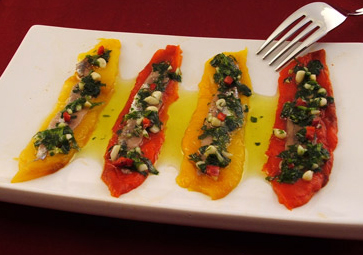
The North Africans
The wealth of new crops and cooking stypes brought to Sicily by the North Africans, an ethnic mix of Arabs and Berbers, is almost overwhelming. It is impossible to imagine how modern Sicilians, or indeed mainland Italians, would eat without their influence.
Citrus trees
They took over Sicily in the 11th century and filled the island with citrus fruit trees of all varieties. Lemons trees are so well suited to the Sicilian climate that they can spread like weeds, and produce fruit literally all year round; so a lemon tree in Sicily will be adorned in every month with white scented blossom, small green fruits, and large yellow ones ready to use. Citrus trees really did seem like a gift from God to the ancients, because they could cure the life threatening disease scurvy; they lasted months and months on the tree; they flavoured anything sweet or savoury and made a drink as well; they could be carried on long journeys without spoiling; and they were easy to cross-pollinate and make new varieties.
The Moors loved their citrus trees so much they called citrus orchards “gardens” rather than “farms” and used them as places to sit and spend leisure time as well as to grow food.
Spices
The Moors also brought apricots, sugar beet, melons, rice, saffron, raisins, pine nuts, pepper, nutmeg, clove, and cinnamon into Sicilian cuisine. Whilst the last tree are not cultivated in Sicily, they are used in many dishes.
Nuts
The Moors also brought the wealth of nut trees Sicily is famous for, including pistachios, almonds, hazelnuts, walnuts and cashews. Their cuisine involved the flavouring of savoury dishes with pine nuts and raisins, which the Sicilians still enjoy today.
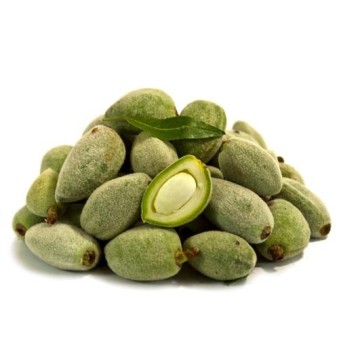
Sicilian cakes are miniature works or art and a great many of them are very sugary and made from ground nuts, according to the old Moorish recipes. The Moors also invented the wonderful sugary almond paste know as martorana, which the Sicilians mould into fruit and vegetables.
Sicilian cassata is an exquisite cheesecake invented by the North Africans – the name means “cheesy” in Arabic. It was topped with candied fruits in a preservation process they invented. The extreme sugariness of all Sicilian deserts is a legacy of the Arabic sweet tooth.

Pasta
They invented dried pasta and turned Sicily into the production centre of an international industry. Dried pasta can be stored and cooked whenever it is needed. There were factories in centres established by the Moors right up until a few years ago, making the Sicilian brand of pasta called Tomasello. The only Sicilian brand of pasta left now is called Poiatti.
Sorbet and ice cream
What would Italy be without Ice cream? The north Africans invented this in Sicily.
The Arabs and Moors were experienced in making what they called sherbet, known to modern Sicilians as Granita or sorbet, by bringing large blocks of ice down from the mountains, shaving off flakes and mixing them with very sweet syrups. Sicilian street vendors still sometimes make granita in this way, and Sicilian manufacturers produce a stunning range of flavoured syrups from natural ingredients.
The Moors in Sicily invented the addition of milk or cream to these cold dishes, thus inventing ice-cream. Many Sicilian bars still make their own ice-cream from purely natural ingredients.

Tuna fishing
The Moors were very organised with food production, and transformed most of the common food types from small cottage farm products into industries. They used modern technologies to develop a tuna hunting industry at key points around the Sicilian coast, building towers where the tuna were corralled into an ever narrowing stretch of water until they were trapped and could be speared. This method of tuna fishing was used unchanged in Sicily for 1,000 years, and only stopped in the sixties or seventies when large fishing trawlers took over. I have spoken to older men who remember watching the tuna fishing season. They said the sea literally turned red with blood, and that the cruelty of it made quite an impression on them as children.
Coffee
Can you imagine Italy without coffee? Or even imagine coffee without Italy?
Perhaps the most pervasive Moorish gift to Italy was coffee. Originating in Ethiopia, it was regarded as a medicine by the Moors in medieval times. It was adopted with a frenzied enthusiasm in Italy, and became such a lucrative trade product that the Venetians competed aggressively with the Moors to dominate its shipping and sales. The Vatican tried to protect its own economic dominance by claiming it was the devil’s crop, and a Moorish threat to Christians.
Despite his claims to speak on behalf of a higher power, the Pope was ignored on this occasion and Italian coffee consumption went from strength to strength.
The Italians invented all the varieties of milky coffees, from cappuccino to caffe’ latte, and Italian methods of brewing and serving coffee have led the world ever since they first discovered coffee and adopted it as their own. The Italian method of forcing steam through ground coffee, used by Gaggia and other coffee machines, was invented as a time-saving method by an 18th century Italian business man and has been adopted by bars around the world.
The Normans
The Normans, or Norse men, were the Viking invaders who took Sicily and all her wealth from the Moors. They added a wider variety of livestock, thus increasing the range of meat-based meals available. They were skilled in breeding cattle, sheep and poultry, and they made these meat sources far more numerous in Sicily.
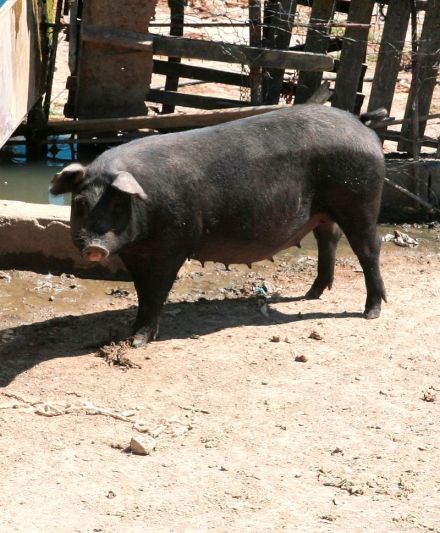
They also revived the breeding of the Sicilian black pig, a delicious source of sausages which was present in the Nebrodi region from at least the Greek period and which was neglected under the Muslim Moors.
The Norman contribution was not so extensive, however. They were most enthusiastic about the cornucopia of crops and food industries established by the Moors, the very reason they had wanted to invade wealthy Sicily in the first place. Their staples, such as apples and pears, were harder to cultivate in the Sicilian heat and only really survived in the mountain regions.
The Jews
The Jews didn’t invade Sicily so nobody knows when they first showed up; but they were translators, interpreters and scribes for a succession of governments, and probably controlled the show throughout. Whilst various invaders debated kicking the Jews out, nobody went through with it because they simply couldn’t govern this multi-lingual society without them.
Palermo in particular is famous for its offal dishes. Much Sicilian street food is offal based, and the tradition arose from the Jews who, ironically, do not eat it. Their charitable donations to the impoverished citizens of Palermo, of the animals parts their religion forbade, kept a great many families alive. This led to the imaginative use of the nutritious ingredients available to them which are kept alive in SIcily’s legendary street foods.
The immortal Sicilian spleen sandwich was a gift of the Jews, as was the frittola and stigghiola, a roast sheep’s intestine kebab.
Oddly enough, the Jews also taught the Sicilians their word for junk food. Sicilians call anything bad for you, that you really shouldn’t eat, a “porcheria“. When you translate this literally, it means “a pig-based food product”.
The Germans
The Germans improved food hygiene in Sicily by introducing urban abbatoirs connected to the frenetic street markets founded by the Moors, that ensured animals could be slaughtered and entirely sold and eaten on the same day.
They also established gardens growing the herbs and aromas which flavour so many of Sicily and Italy’s classic dishes, including basil, oregano and many others.
The Spanish
The Spanish were the last great contributors to Sicilian and Italian cuisine.
The Tomato
Their most ubiquitous contribution was the tomato, which grows so well in the volcanic areas throughout Italy and Sicily. It is impossible to imagine modern Italian food without the tomato.
Its addition to pizza, which had since Roman times been little more than garnished cheese on toast, created the immortal dish of Italy. The boiling and preservation of tomato sauce for pasta dishes year-round had such an impact on the Italian palate that it is sometimes difficult to think of a single pasta sauce that doesn’t require tomato.
Prickly pears
It was also the Spanish who imported prickly pear plants to Sicily. Native to central America, they now dominate the Sicilian countryside. The Americans call them Indian figs, referring to the American Indians. In true Sicilian style, this has been changed to Fichi d’India, which means “Figs from India”.

Chocolate
The Spanish also brought chocolate to Sicily, where it is still made into bars in Modica using the ancient Aztec recipe; the only other place in the world that chocolate is still made in this way is Guatemala.
Potatoes
The Spanish also, of course, brought Sicily the potato. Whilst it doesn’t grow easily in the Sicilian soil, which is baked hard then drenched in torrents of rain, the Sicilians manage to cultivate it well and are great fans of chips. The Sicilians are, after all, the inventors of the chip pizza! Sicilians also love mashed potato, and use diced potato and herbs as a pizza sauce.

Vanilla
Another great Spanish gift to Italy was vanilla. If you stand outside an Italian bar and take in the magnificent aroma of coffe and vanilla, you may wonder how Italians ate breakfast before the Spanish came. Hardly an Italian brioche or pastry can be made without lashings of vanilla, and what would the Christmas Panettone taste like without it?
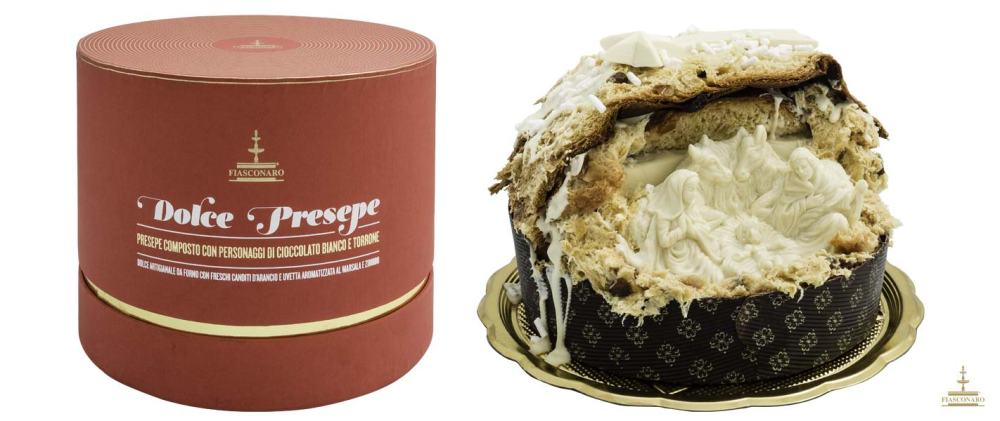














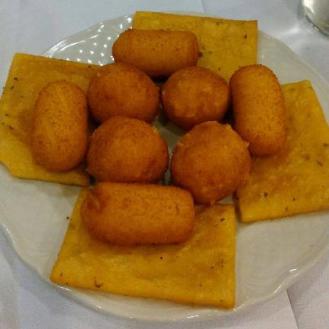












Hi Veronica,
Great blog. Having read one of your previous posts about Modica chocolate I decided I would try and track some down.
Found some on Amazon. Not cheap but it is totally fabulous. Tastes what chocolate should taste like.
Keep up the good work
LikeLike
Excellent review of the influences to Sicilian cuisine.
One of the best books I’ve read on the subject is:
“Bitter Greens: Essays on Food, Politics, and Ethnicity from the Imperial Kitchen”
(SUNY Series in Italian/American Culture)
Professor Anthony Di Renzo, (Author)
ISBN: 9781438433172
I learned much, and enjoyed the author’s writing enough to have bought copies as gifts for friends.
LikeLike
Brilliant work. Appreciate the time and effort you gave to this informative post. Thank you!
LikeLike
I am impressed by this new look of your page, and that even Germans contributed to Sicily’s kitchen culture! Who ever thought of that?! Maybe you are the first ever to consider this! Congratulations!
Maybe this tradition is following the book “Hortulus” written by a Reichenau monk in the 9th century, see here:
https://en.wikipedia.org/wiki/Walafrid_Strabo
Maybe the Norman monks brought it with them?
Ah, and see here:
http://wyrtig.com/EarlyGardens/Continental/Walafrid/Hortulus.htm
You must know: The island of Reichenau is very close to the place where I grew up.
LikeLike
I wish I had had space to write more on all of the invaders, especially the Germans.
I was lucky enough to meet the well known Sicilian historian Gaetano Basile a couple of years ago, and he waxed lyrical, teaching me a great deal about what the Germans contributed to Sicilian cuisine. In his view, their influence was probably as important as any of the others, and it was he who explained about the abbatoirs and the concept of hygiene coming from the Germans. According to him, Palermo was a messy and filthy place before the Germans came and tidied it up. Though some might say the Sicilians may have lapsed a bit since the Germans left!…. 😉
LikeLike
Thanks Victoria, hope all is well in suuny England😆. Thanks as always for a wonderful trip through history and cuisine.
LikeLike
My pleasure, and I am glad you enjoyed it 😋
LikeLike
So interesting, thanks for this post.
LikeLiked by 1 person
Veronica, so sorry for the name change. Knew it was wrong when I hit send. Buon appetito from a turkey in Texas😆
LikeLiked by 1 person
No problem! So long as you don’t call me Verucca
LikeLike
That’s fine… So long as you don’t call me Verucca
LikeLike
OMG, the dreaded chip pizza! That’s all my kids wanted when we were over there…now I can say they were eating traditional Sicilian cuisine. They called it a Scooby Doo (yes, they really did!) My apologies for this being the most standout feature of your blog when there is a wealth of information of heritage and culture!
LikeLike
Ha haaaa! I have to say I was gobsmacked to see my first Sicilian chip pizza. It’s probably the iconic item that proves Sicilians are different from Italians!
And it even beats the chip butties my fat auntie used to eat!
LikeLike
Your posts are magnificent! I learn more and more. But, just as a side note, I first saw a “chip” or “French fry” as we Americans say– pizza in the 80’s. It came in about 8 years after rotisserie chicken places really caught on. The new layout for the website is lovely. Hugs!
LikeLike
Thank you! Glad you like the new look.
So chip pizzas are just a new-fangled fad? That’s a bit disappointing! 😒
I suppose they fit the Sicilian “Fried with Pride” principle of fast though.
LikeLike
thankfully, sicily was never conquered by the English, as they would have ruined its cuisine.
LikeLike
Ooh you cheeky thing!
But yes, it’s true.
Though in our defence I would like to mention that when the Godmother came to visit last month, she actually liked baked beans so much she took a can home in her suitcase! Though now I think about it, I suppose that’s proving your point….
LikeLike
Thank you. Beside being a really entertaining and addictive read, this is extremely informative. As a convinced ‘foodie’ I love to learn more about the history of cuisine, and you’ve given me a lot to chew on!
LikeLiked by 1 person
Very interesting! Thank you!
LikeLiked by 1 person
Dear Veronica Please can you help me with your translation of nespole, the yellow fruit that looks a bit like an apricot? I’m currently in Sicily with a group of English tourists (I’m the tour manager) and it’s provoked a discussion Many thanks Rosemary
Sent from my Samsung Galaxy smartphone.
LikeLiked by 1 person
The proper English word is medlar.
LikeLike
There are rural areas where people call them doggus…. If you look at one of them end on, and imagine looking at a dog from the same angle, you might be able to imagine why!
LikeLike
I only counted 8 invasions. But I love their story.
LikeLiked by 1 person
Ha haaa! Most of the later ones were from southern Europe and didn’t have anything noteworthy to add to the menu 😀
LikeLike
as for the residency of the Jews, they most likely settled there during the Spanish Inquisition…as they settled in many countries which accepted them through out the travel-able globe. They are known as Sephardic Jews.
LikeLike
Wonderful, entertaining AND funny, thank you so much for your good humor and generosity. Reading your blog this Easter day in (essentially) northern Italy (Southern Switzerland) I am restored with laughter, hope, and curiosity.
LikeLiked by 1 person
I’m so glad you have enjoyed it!
LikeLike
Wow, everything was brought to Sicily, even surrounded by water they don’t get credit for a seafood cuisine, what did the Sicilians eat before? What was in Sicily before? anything?
LikeLike
Ha haaaa! Good question!
I honestly don’t know. They must have eaten fish… Hmm… What else?
LikeLiked by 1 person
I once read artichokes were brought there by the Israelites.
LikeLiked by 1 person
I’ve just done some Googling and several websites say the artichoke was native to the Mediterranean, particularly Sicily. So I think you’ve cracked it. The original Sicilians were living on artichokes! 😀
LikeLiked by 1 person
My ancestors from Ischia, had pine nut groves, dating way back. My mother used “i pignoli” in many of her dishes, with raisins.
LikeLiked by 1 person